June 2, 2022
Despite the fact that India is an agricultural country where agriculture is the primary source of income for over half of the people, farmers confront appalling conditions. These scenarios typically arise when crop products do not meet expectations because harvests have been ruined by pests or harsh climatic conditions, leaving farmers with hefty farm loans.
While core areas of it are still labor-intensive, farming-related information and knowledge dissemination can hugely leverage growing advancements in technology to avoid these scenarios by improving farmers’ access to information and expert guidance (e.g., knowing weekly weather updates and how to treat pests to impact yield significantly).
Digital Green is one such organization that recognizes this and works towards empowering smallholder farmers by creating a world where farmers use technology to build prosperous communities.
In July 2021, Digital Green started their journey with Glific for their WhatsApp based chatbot program for smallholder Chilli farmers in Andhra Pradesh by sending timely advisory information that will help them with preventive steps from Leaf Curl, a plantation disease, and curation steps if their crop is already manifested with the disease during the crop cycle.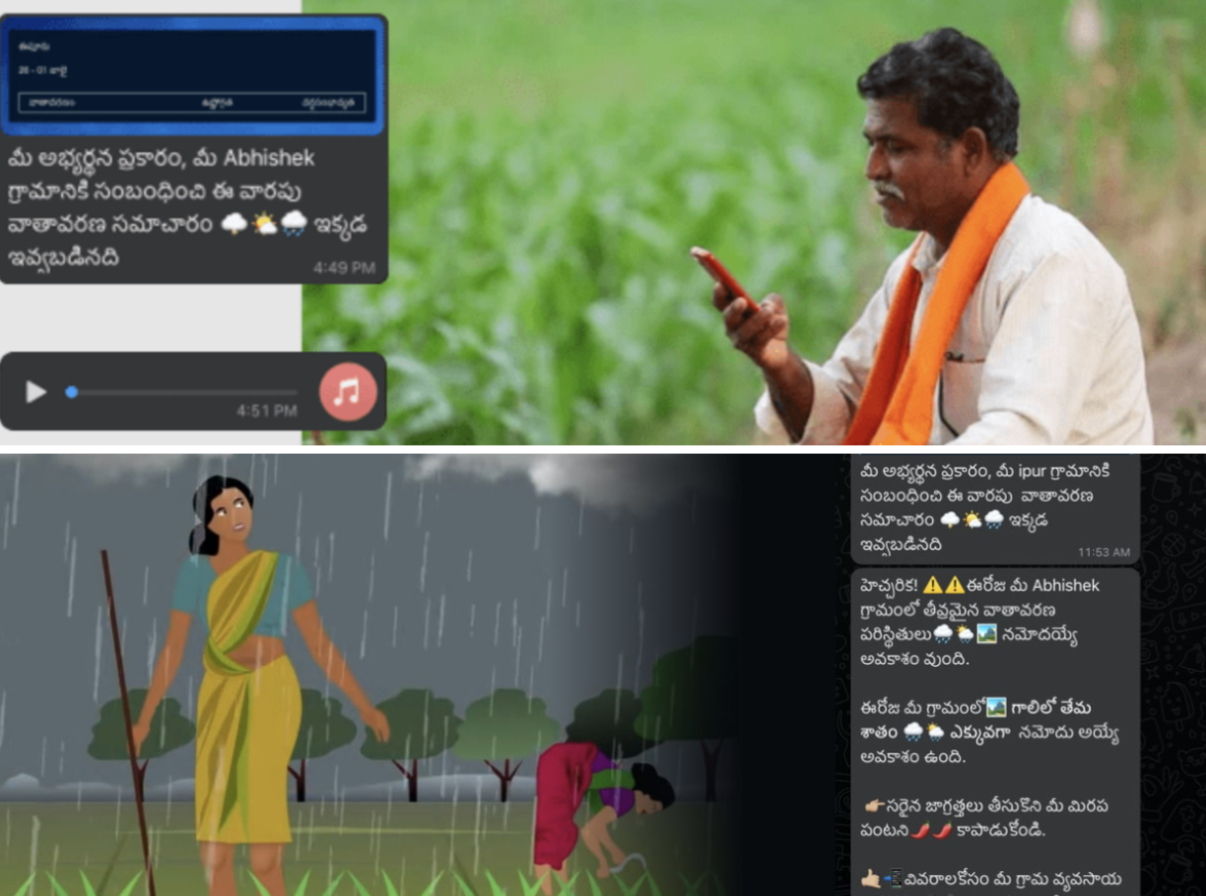
Read more about their journey here
For this year Digital Green is planning to roll out two Whatsapp-based chatbots in the upcoming Kharif season. The bots are planned to run for 11 months starting from May’22. One bot would be launched in Andhra Pradesh with RySS and the other in Telangana, an initiative of govt of Telangana under Saagu Baagu project.
RySS Bot
The RySS chatbot is a Telugu text-based chatbot. It will be a pull-and-push bot that will span 26 districts in Andhra Pradesh and will cover all of the primary crops for each district, namely Cotton, Paddy, Groundnut, Bengal gram, and Chilli.
The RySS bot has been launched on 25th May 2022 for more than 5000 farmers. They will interact with the bot for the next eight months, while the DG team monitors the insights at each level of user interaction in the flow via the data studio dashboard.
In this article, we’ll look at how Digital Green has been utilizing Glific to deliver messages via Whatsapp, as well as some of the trends that they captured in their custom Datastudio dashboard.
- Overall Status: The general status of the bot is displayed on the first page, which contains information such as the total number of contacts who contacted the bot, registered contacts, inactive contacts, the daily number of messages sent, and contacts interacted with. It also indicates farmers who have opted to receive push chili and paddy messages, in addition to the general bot’s high-level status.
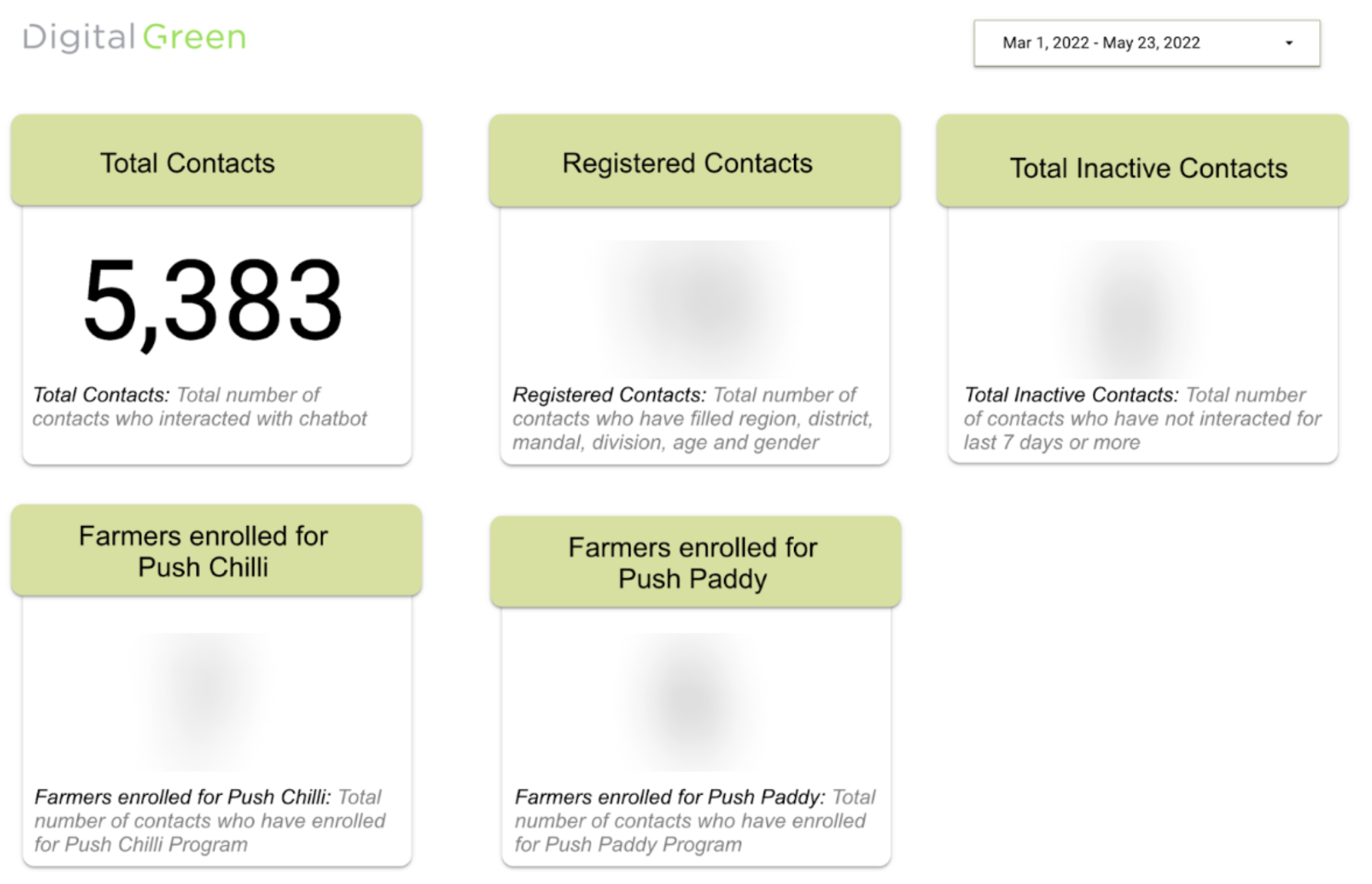
- Flow Level Graphs: The second page includes a flow level report with metrics such as the number of flows initiated per contact, the number of flows completed per contact, daily activity on flows, and invalid responses entered by contact.
This greatly aids in determining which flows are being interacted with the most on a daily basis and the bot’s overall engagement.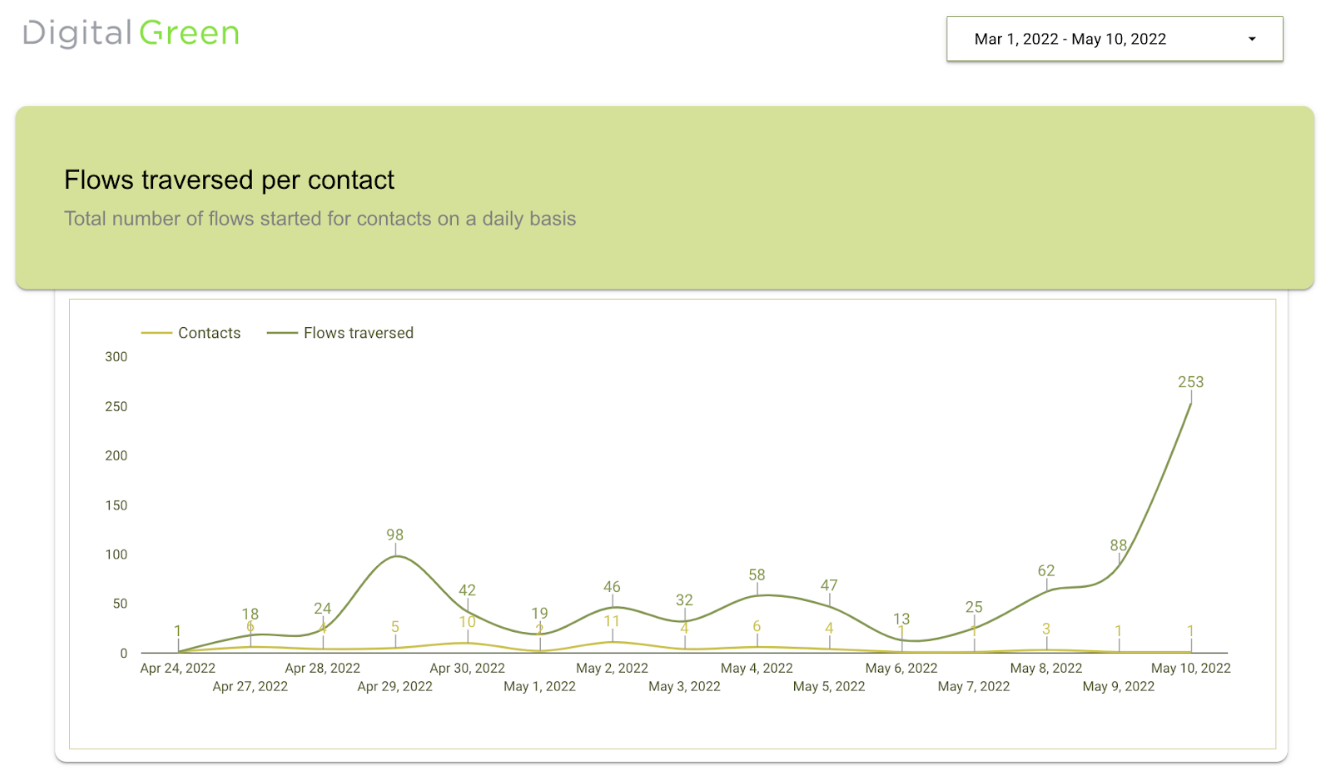
It also helps in understanding where contacts are being stuck, indicating which flows need to be improved.
- User Level Graphs: The user-level graphs on the third page can be filtered by geography levels, such as Region, District, Division, and Mandal.

In addition to tabular data, bar graphs and pie charts are also used to display user distribution across geographic regions, age, and gender.
- Message Level Graphs: Next, on a different page, we have message level reports with graphs such as daily push paddy and chili messages delivered, adoption message response, the number of times crop was selected from the menu, and media messages shared by farmers.
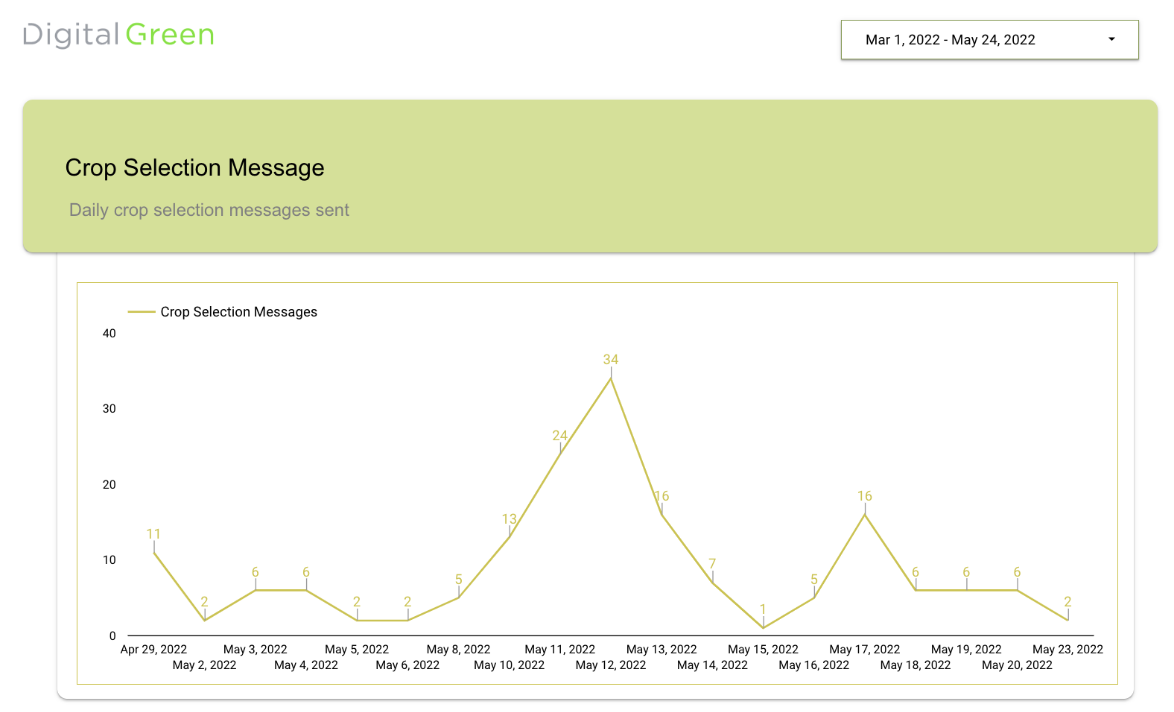
This assists in tracking which parts of the program are extensively used by analyzing user responses and monitoring the messages sent and received on a daily basis.
- Crop level graphs: At last, we have crop level graphs to monitor the distribution of farmers based on their crop age and stage.
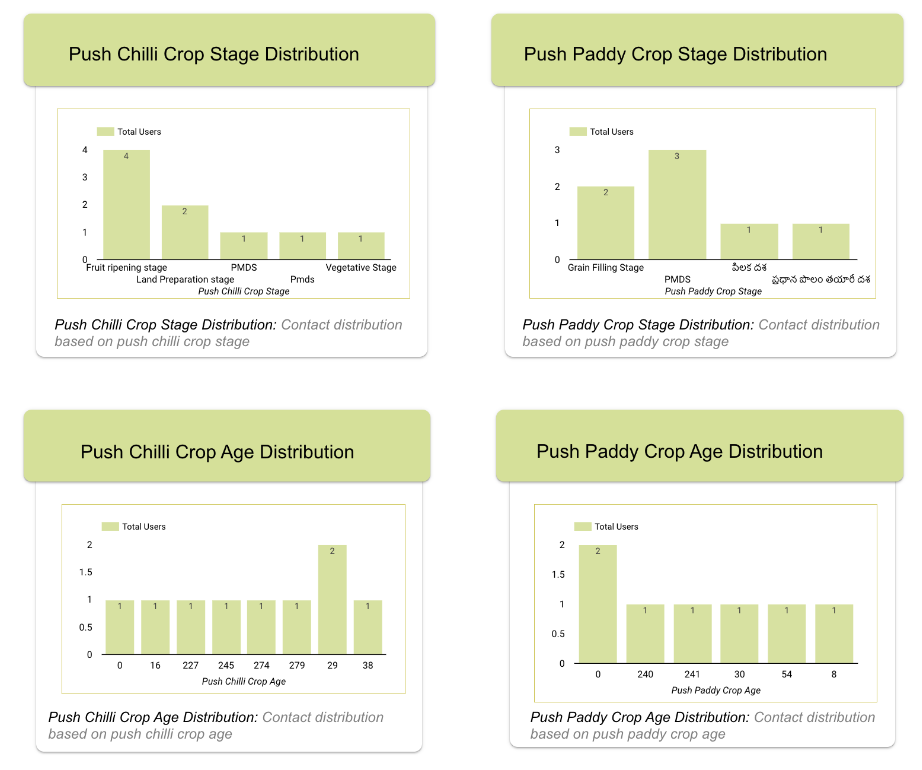
The distribution can be filtered by crop type and geography levels, such as Region, District, Division, and Mandal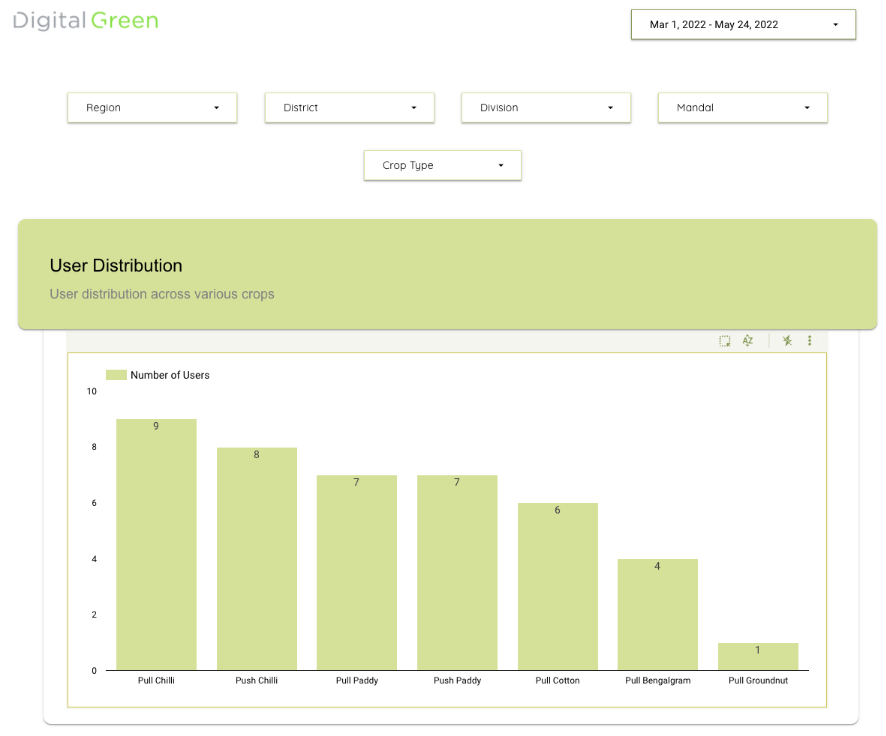
The Digital Green team will be monitoring their RySS chatbot with these numerous metrics and custom filters.
These chatbots are a huge step forward in terms of empowering farmers by combining the collective power of technology with grassroots partnerships, and we at Glific are equally excited to be a part of their journey and support them in technical aspects so that they can reach a larger audience and have a greater impact.